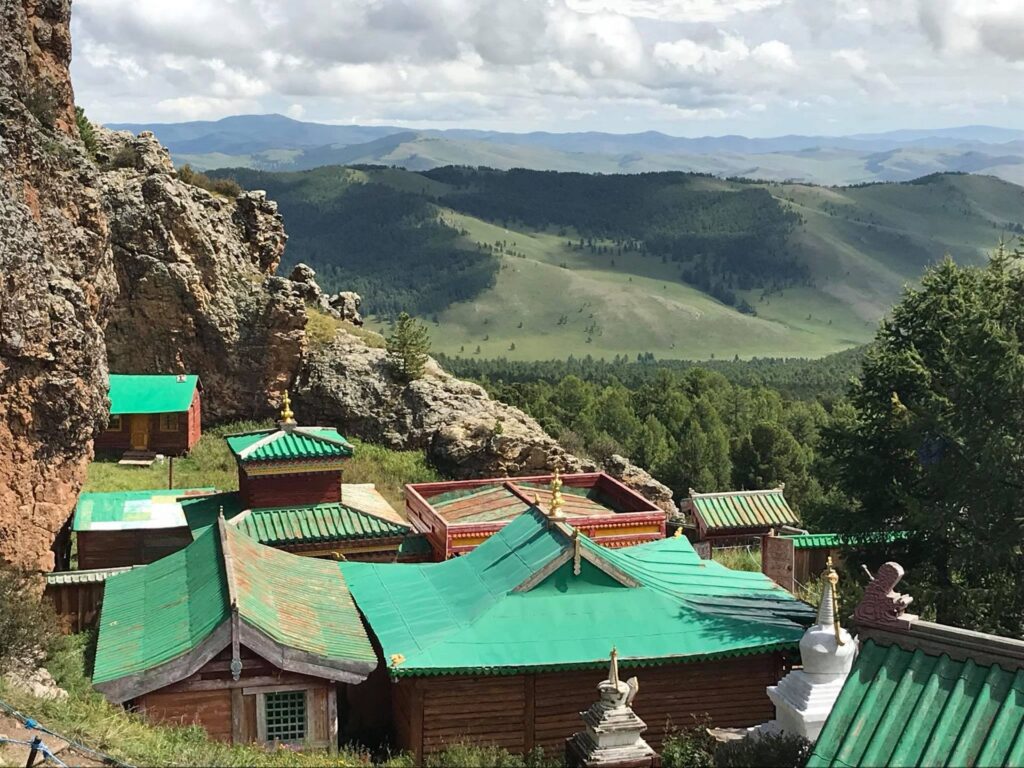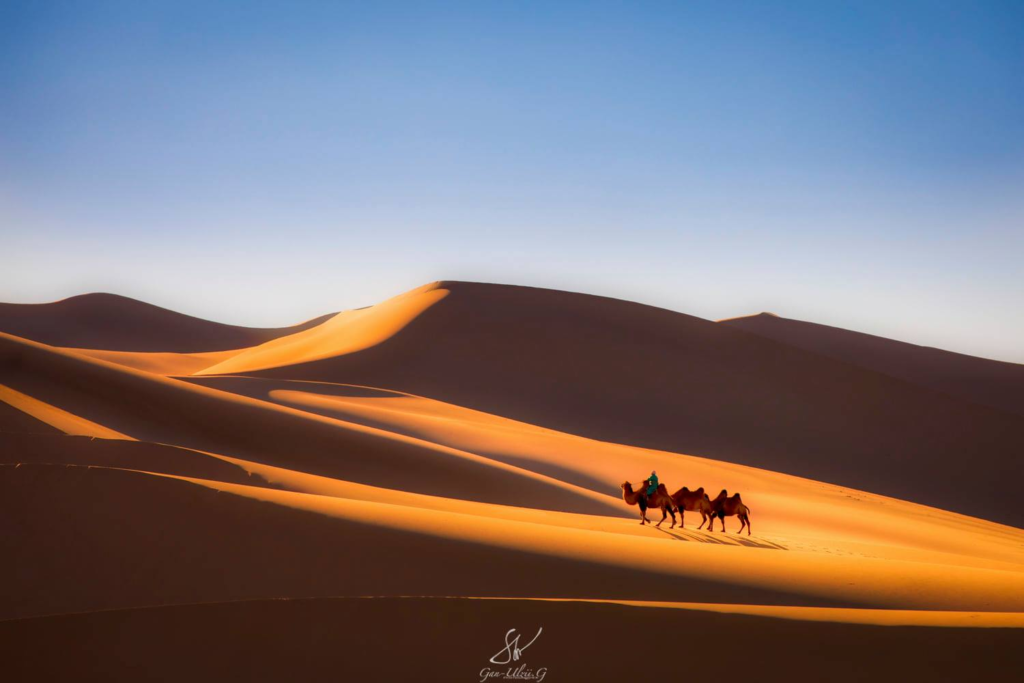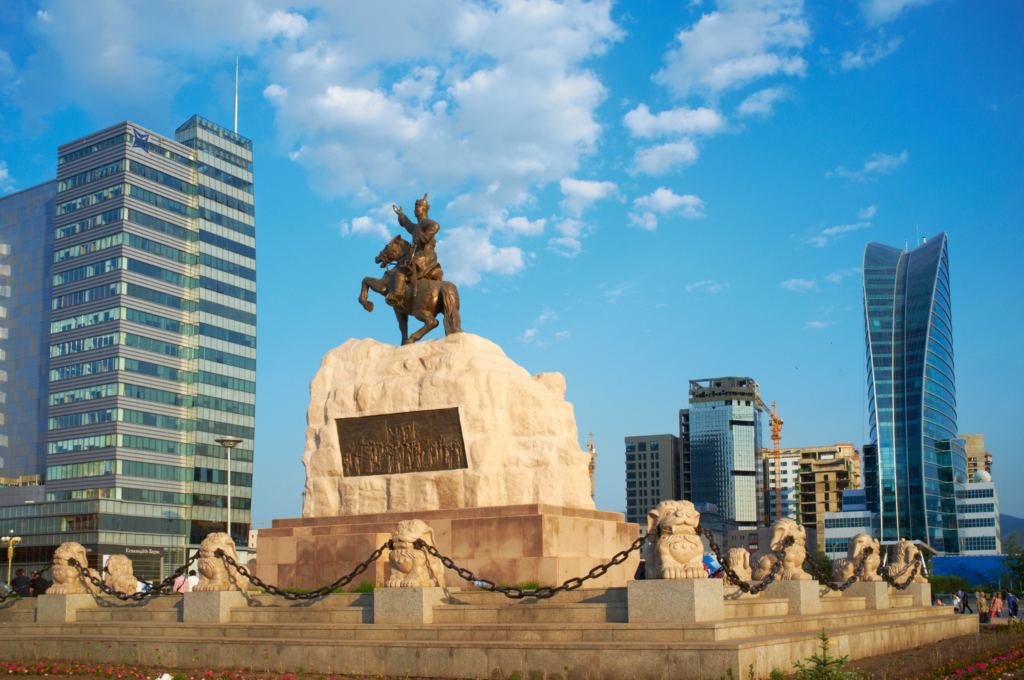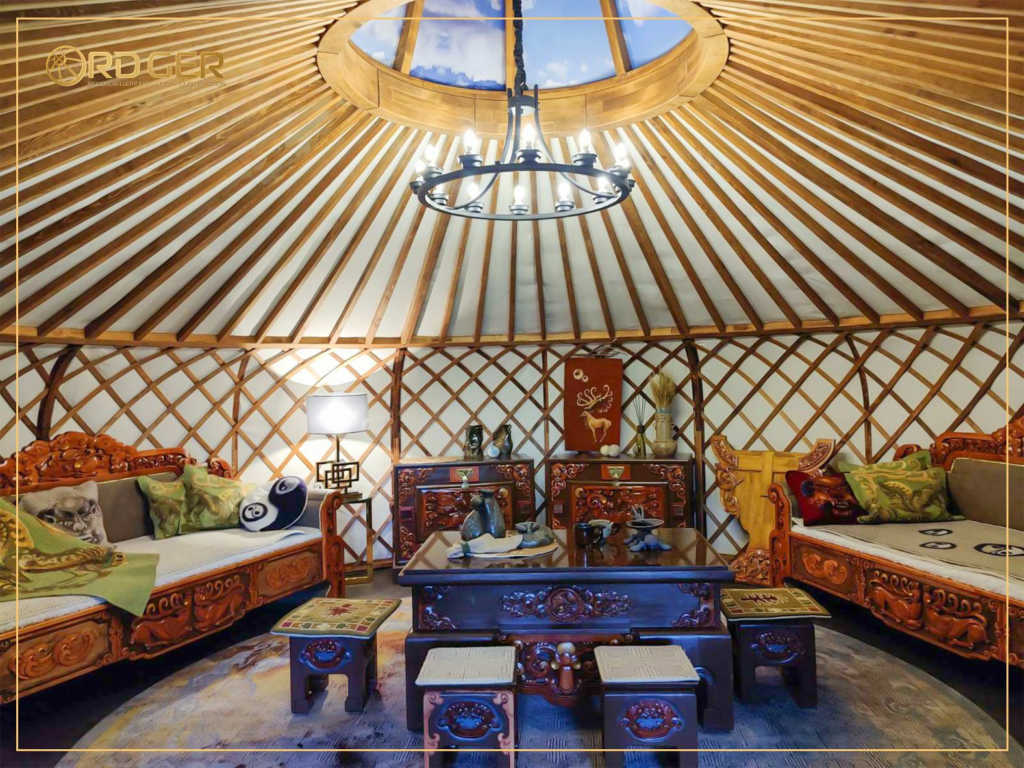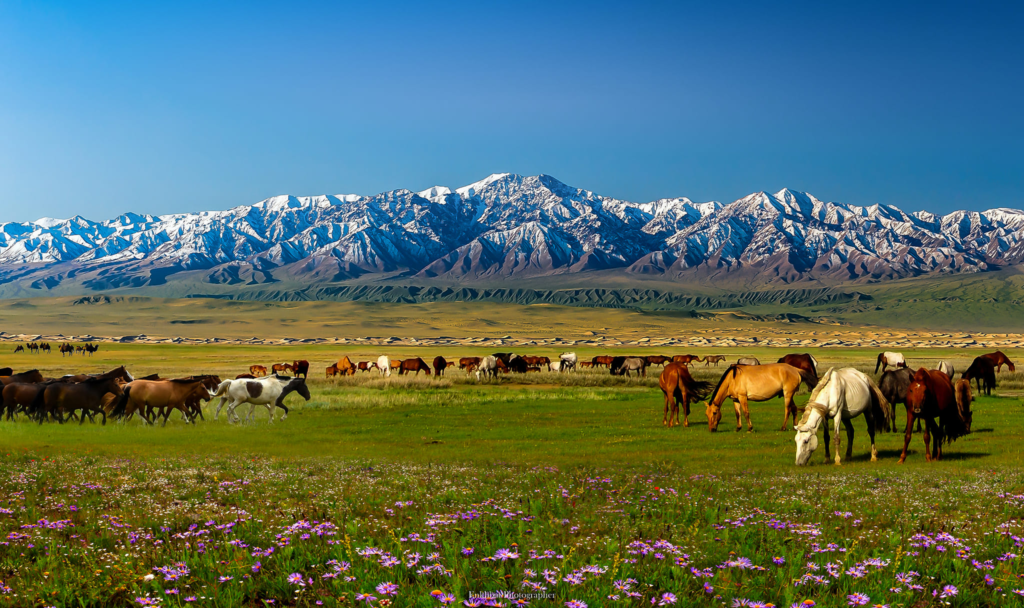MONGOLIA ADVENTURE TOUR 15 DAYS
MONGOLIA ADVENTURE TOUR 15 DAYS
Prepare for the journey of a lifetime with our 15-day Mongolia Adventure Tour. Mongolia, a land of boundless beauty and untamed wilderness, beckons the adventurous spirit in you.
This comprehensive tour will immerse you in the heart of Mongolia’s diverse landscapes, from the iconic Gobi Desert to the pristine shores of Lake Khövsgöl, and the rugged terrain of the Altai Mountains.
Whether you’re a nature enthusiast, history buff, or simply seeking an off-the-beaten-path adventure, this tour offers a unique blend of culture, nature, and discovery.
Join us for 15 days of exploration, where you’ll create memories and connections that will last a lifetime on our Mongolia Adventure Tour.
What’s Included
Accommodation
Hostels, guest houses & hotels
Adventure Leader
Epic Adventure Leaders
Local transport
All transport
Activities
Tonnes of activities included.
Optional activities can be added.
Full itinerary

Arrive Ulaanbaatar Chinggis Khaan International Airport. Transfer to Hotel. Orientation meeting with your guide in the evening.
City Tour in Ulaanbaatar to visit the central square, selected museums, and Gandantegchinlen monastery. Shopping if required for your trip. Cultural performance “Tumen Ekh” in the late afternoon, followed by dinner with your hosts at a restaurant close to your hotel.
Travel from Ulaanbaatar to Middle Gobi Province – experience the expanse of the Mongolian steppe, undulating grasslands, a landscape alike to the prairies of the Midwest of the United States. Lunch in Mandalgovi, the provincial capital.
In the morning, drive Westwards towards the mountains of Gobi Gurvan Saikhan National Park. We first travel North along the Eastern Beauty Mountains, until we turn South at a big sign marking the entry to Mongolia’s largest National Park – “Gobi Gurvan Saikhan National Park”.
Translating into “The Three Beauties of the Gobi National Park”, it is named after the three mountain ranges at its core. This morning, we visit the famed “Yoliin Am”, the “Vulture Gorge”. At the entrance to the valley leading to the gorge, we pass the ranger station and pay our park entrance fees. A small museum nearby is worthwhile visiting to see exhibits of wildlife, information on the dinosaur findings and on the natural history of the area. There are also Ger shops, where local people sell handicrafts.
The drive to “Yoliin Am” from here is up a winding valley, the mountain slopes covered with green patches of dwarf juniper. And with a little luck, you will spot Ibex in the rugged rock walls on either side of the valley. Arriving at the parking lot after a fifteen minute drive, we hike from here into the gorge.
Depending on the season, you will sooner or later reach the ice sheet filling the valley bottom. The steep walls of the canyon prevent the sun from reaching the bottom, and the ice accumulated during wintertime prevails throughout the desert summer in most years.
You may see Pika, and hear their whistling, in the rocks nearby as you hike the trail into the gorge. And high above in the sky you will probably see large birds circling in the sky. “Yol”, the “Laemmer Geier” after which the gorge is named, has an impressive wingspan, and you might also see eagle and other vultures.
Leaving Yoliin Am and the Eastern Beauty Mountains after a picnic lunch, we turn west again and travel to the Western Beauty Mountains. In a foothill location, ancient petroglyphs can be seen – after a short climb. For tonight’s accommodation, we then drive to the Gobi Nomads Lodge – about half hours drive.
After breakfast, we again drive to the Western Beauty Mountains, and enter a small winding valley leading to a meditation retreat and temple established by the local community. The buildings are perched on small rugged peaks, but easily reached via stone stair ways. The rock outcrops offer sweeping views across the desert landscape.
Today lunch is again a picnic lunch, near the temple or further along the road. If time allows, it is in the spectacular Gegeetiin Am (gorge), before continuing along the north side of the Western Beauty Mountains. Once we cross a small saddle, the long sand dune complex of Khongoryn Els comes into sight.
These dunes stretch over more than 100 km from southeast to northwest. We travel to a small Ger Camp/Guest House (Gobi Tuguil) located near the highest elevation of the dunes, also called Singing Sands.
After breakfast, we get ready to explore the Singing Sands. Options include a short camel ride to the dunes. Those who want to climb the sand dunes on foot can do so. After lunch at the camp, we travel back to Baynzag, the famous Flaming Cliffs.
Overnight stay is at the Home Stay of a young herder family, in nicely prepared gers, with good home cooked food, and simple and clean facilities.
In the morning visit the famous site of “Baynzag”, also known as “Flaming Cliffs”. It’s a landscape of red sediments, with canyons and escarpments and sand dunes below. It’s a picturesque landscape, and it is another famous paleontological site, perhaps the most significant dinosaur site worldwide. It became well known internationally through the expeditions in the 1920ies of the American Museum of Natural History lead by Roy Chapman Andrews.
Mongolian and international scientists have excavated and continue to work here, and a modern visitor center is planned for “Bayanzag Park”. Among the sensational finds here were dinosaur eggs, many specimens of protoceratops, bird-like dinosaurs, and a crocodile Shamosuchus.
It is interesting to take an extended walk here amongst the canyons and on cliff tops, with caution not to venture onto or below overhanging promontories. Green desert plants stand in stark contrast to the red ground, and it is interesting to see many living reptiles, small lizards, camouflaged among the rocks and sand and seeking shelter around plants.
The Mongolian name “Baynzag” refers to the wealth of Saxaul (zag) bushes in the surrounding plains of the Flaming Cliffs.
After lunch (picnic lunch or at ger camp), travel to the valley of the Ongii River, and the ruins of Ongii Monastery. In a nice setting along the river are several ger camps, and we spend the night here in the Secrets of Ongii Ger Camp.
After visiting the ruins of what was the largest monastery in Mongolia, travel North through the desert steppe landscape, passing several rural centers and reaching Arvaikheer, the capital of Uvurkhangai Province. Lunch at the Arvaikheer Palace Hotel.
After lunch, we set out for the drive to Kharkhorin, the ancient capital of Mongolia. Leaving the sealed road after about a half hours drive, we are back on a country side road, and will travel through great rural scenery, a typical Mongolian summer setting – the landscape dotted with white gers and large herds of horses and other livestock grazing. When nearing Kharkhorin, we also pass one of the farming areas of the country.
The landscape we are entering is the Orkhon Valley, a UNESCO Cultural World Heritage Site – this is the cradle of nomadic civilization, and an area where several nomadic empires existed. Kharkhorin is steeped in history, with remnants of several empires, and with Erdenezuu, the oldest and today the most important Buddhist monastery. There are several museums and sites to see besides the monastery inside the wall and stupas. Overnight at Anja Ger Camp outside Kharkhorin.
This morning, we visit the Kharkhorin Museum and adjacent Erdenezuu Monastery. After lunch at the Ikh Khorin Hotel, we drive eastwards on the paved road to Hustain Nuruu National Park. Dinner and overnight at the Ger Camp at the park’s headquarter.
Hustai Nuruu National Park was established to support the re-introduction into the wild in Mongolia of the Takhi, or Przewalski Horse. Last sighted in the wild in the late 1960ies, this truly wild horse is sacred to Mongolians. Many specimens had been captured, beginning already in the late 19th century, and the species was reproducing well in European zoos. Private foundations, namely a Netherlands foundation, supported the re-introduction here at Hustai Nuruu, and today the Takhi population here has reached several hundred again. Besides the wild horses, there is a strong elk population in the park, marmots are thriving, and bird life is abundant.
After breakfast, we set out in vehicles on designated tracks in the park. Usually, groups of wild horses, and herds of elk, can easily be spotted from the tracks. Deeper in the park, there are also stone statues of the Turkic period and bronze age burial sites which we will visit if time allows. After the park visit, we return to the head quarters for check in at the visitor center and souvenir shop.
After lunch, we depart and travel to Ulaanbaatar City, about 1.5 hours drive on sealed road. We bypass the city, traveling the mountain road on the foot of Bogd Khan Mountain, once the game reserve of the Bogd Khan and the oldest protected area of the world. It is now developed, also the Mongolian President’s residence is located here.
There is opportunity to stop at a shop if needed, and we can climb the stairs to the Zaisan Monument – a World War II monument with murals in the socialst realism style. There is a excellent view above Ulaanbaatar city from here, across the modern down town area towards the sprawling ger districts on the hills North of the city.
We continue the drive eastwards, and having left the city behind will hit a country road again to make our way up to tonight’s accommodation in the Gobi Deluxe Resort. Once a socialist time summer camp of the Gobi Cashmere company, the resort is now converted into a hotel with spacious rooms, situated in a valley and nestled against the forest edge. This is near to next night’s Herder Home Stay in the Darkhid Valley, the staging area of Stone Horse Expeditions and the home valley of the Stone Horse herd.
Drive to Gorkhi Terelj National Park, passing the rather “developed” entrance area of the park with many resorts and camps, crossing the river and traveling into the more remote part of the park where the Princess Camp is set up in beautiful surroundings – in the landscape typical for the park. Mountain meadows and larch forest in the lower region. Granite formations and sculptures towering above, and in the distance the barren mountain tops of the higher regions.
The Princess Camp is a great base for hiking, horse riding, relaxing. It is named after the Princess Temple – the ruins of which are hidden deep in the forest and can be reached on foot, horseback or – by oxcart of a local herder. The latter is an interesting option for the visit to this site of history and folklore. Overnight in Princess Camp.
Hike or oxcart trip – both are great opportunities to explore the area and for photography. Picnic lunch and return to the Princess Camp. The simple but beautiful camp has showers, a sauna, a restaurant ger in modern construction, and a comfortable ger lounge/bar.
In September the nights get chilly out here, but the gers will be cozy, heated by wood stoves. The camp staff will start them around dinner time, and – early in the mornings. Overnight in Princess Camp
After breakfast, travel back through the park to the village of Terelj and the river crossing. Before returning to Ulaanbaatar, we drive East to the Chinggis Statue – a monumental statue of Chinggis on his horse, overlooking the steppes. A museum teaches about the history of Chinggis Khaan and the Mongolian Empire. Visitors can walk up through the tail of the horse and reach a high viewing platform, providing a great vantage point over the steppe landscape where Chinggis came from and where some of the historic sites of Mongolia’s heartland lie. A great way to conclude your exploration of Mongolia.
About an hours drive back to the city of Ulaanbaatar, check into your hotel.
Time for souvenir shopping – cashmere!, arts and crafts. There are various shops, galleries as well as factory outlets of the different cashmere companies. Also yak and camel wool products are available and worthwhile checking out. Evening – farewell dinner.
Transfer to Airport
What our customers say
Tour Details
Price included:
- Guide
- Hotels
- Tourist camps
- Breakfast, lunch, dinner
- Horse and camel riding
- Horse guide
- Entry fees for monasteries Museums National parks
- Tickets of entertainments and camels and horse racing
- Cultural performance
Price excluded:
- International airfare ticket
- Insurance
- Drinks
- Emergency land rescue if required
- Tips etc…






